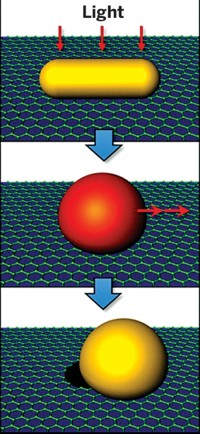Advertisement
Grab your lab coat. Let's get started
Welcome!
Welcome!
Create an account below to get 6 C&EN articles per month, receive newsletters and more - all free.
It seems this is your first time logging in online. Please enter the following information to continue.
As an ACS member you automatically get access to this site. All we need is few more details to create your reading experience.
Not you? Sign in with a different account.
Not you? Sign in with a different account.
ERROR 1
ERROR 1
ERROR 2
ERROR 2
ERROR 2
ERROR 2
ERROR 2
Password and Confirm password must match.
If you have an ACS member number, please enter it here so we can link this account to your membership. (optional)
ERROR 2
ACS values your privacy. By submitting your information, you are gaining access to C&EN and subscribing to our weekly newsletter. We use the information you provide to make your reading experience better, and we will never sell your data to third party members.
Materials
Newscripts
Walkin' In A Winter Nanoland
by Lauren K. Wolf
January 4, 2010
| A version of this story appeared in
Volume 88, Issue 1

He might not have a corncob pipe and a button nose, but a microsnowman recently fabricated by David Cox, a scientist in the Quantum Detection group at the National Physical Laboratory, in the U.K., has something Frosty doesn't: staying power. Made of two tin beads "glued" together with a bit of platinum, this snowman stands about 25 µm high and doesn't fear the sun, permanently smiling with a mouth milled out by a focused ion beam (FIB).
According to Cox, his jolly little creation, which stands atop an atomic force microscope cantilever, was put together for the lab's annual holiday card. But images and video of the "world's smallest snowman" also went viral over the Web. "It has certainly given me an insight into the power of the Internet," he tells C&EN. "I've had colleagues all over the world asking it if was mine."
Cox typically uses the lab's dual-beam FIB instrument to make or modify objects such as nano-superconducting quantum interference devices (nanoSQUIDs) for studying the nanomagnetism of biological systems. To make the snowman, he used the instrument's piezo manipulation system and a carbon-fiber tip to move the beads into place. He then deposited the platinum glue through ion-beam decomposition of a short burst of (CH3)3(CH3C5H4)Pt gas. The snowman's nose, about 1 µm wide, is also a small blob of platinum, deposited in mere seconds.
"I only had a couple of days to plan it and build it, so I decided on the snowman," Cox says. "I could put it together in a couple of hours." But "had I known it would go global," he laments, "I would have made it much smaller—at least an order of magnitude."
Students at the University of Nevada, Reno, have also recently begun to ponder wintery applications for tiny particles. A new curriculum developed there by mechanical engineer Kam K. Leang and colleagues Jonghwan Suhr and John Cannon aims to integrate nanotechnology into undergraduate design courses. To start with, the scientists will help students practice their downhill form by building their own skis.

The undergrads will substitute some of the traditional materials in skis—composite layers of polymers, metal, wood, rubber, and fiberglass—with more advanced nanomaterials "to improve performance, reduce weight, increase strength, and improve damping and stability," Leang says.
Within an hour's drive from Reno are a handful of ski areas, says Leang, who has been building skis in his garage since 2004. "So we have a lot of students who are excited about skiing, and this project gives them the opportunity to apply their engineering skills to an exciting example," he adds.
In its inaugural semester, the class produced two sets of prototype skis: The first incorporates tiny metal balls, or particle dampeners, into the ends of the skis to dissipate energy and lessen vibration on the slopes. The second set of skis—although they don't yet incorporate micro- or nanoparticles—have been designed to fold to a convenient size for travel. "We'll focus on incorporating the new materials to enhance performance" in the next class, Leang says.
In the future, he tells C&EN, the two-year National Science Foundation-funded project should afford the students time to look into other structures such as aircraft components and wind turbine blades. "The ski example is just one way to excite them to think about the possibilities of engineering with nanomaterials," he says.
In the meantime, some serious testing needs to be done. Leang says he will soon be joining his students on the slopes—all in the name of science—to check their designs.






Join the conversation
Contact the reporter
Submit a Letter to the Editor for publication
Engage with us on Twitter